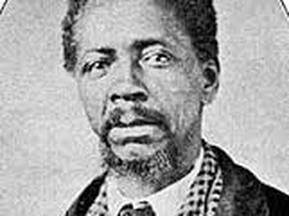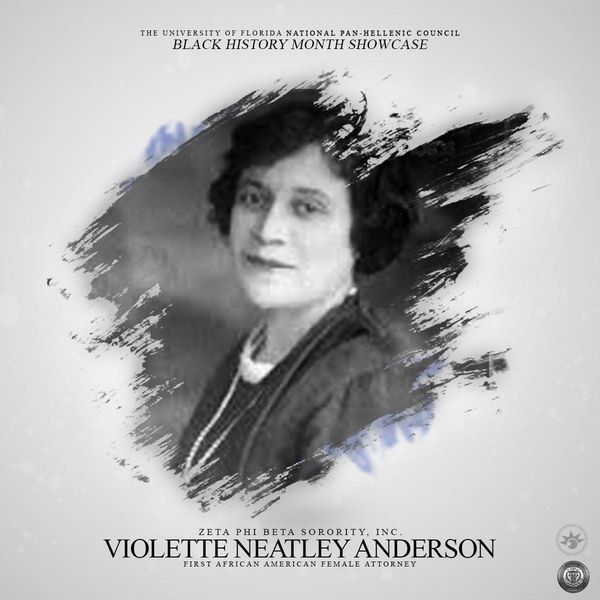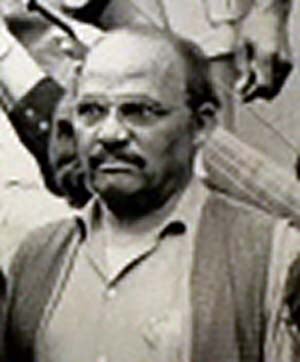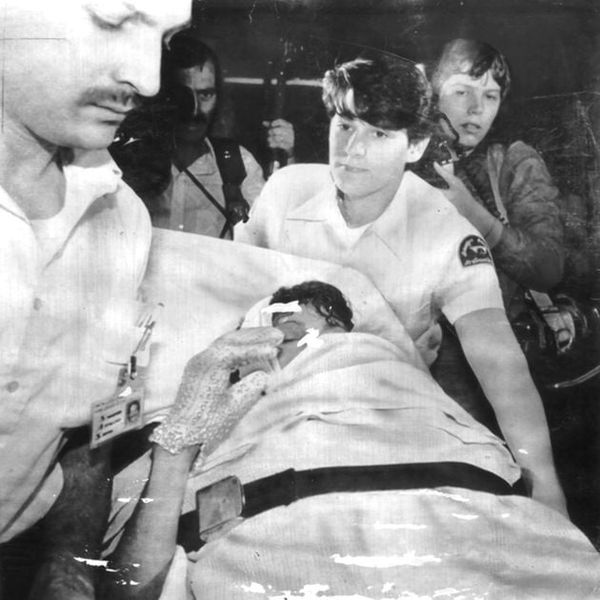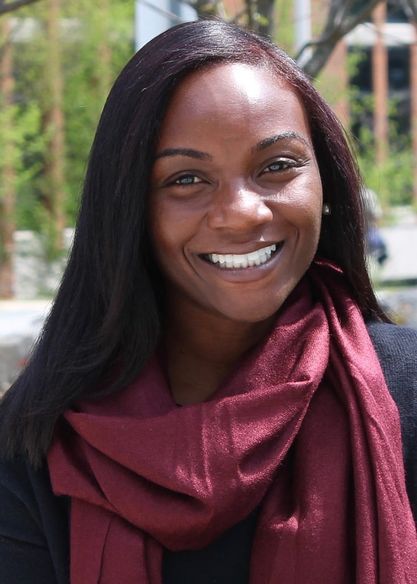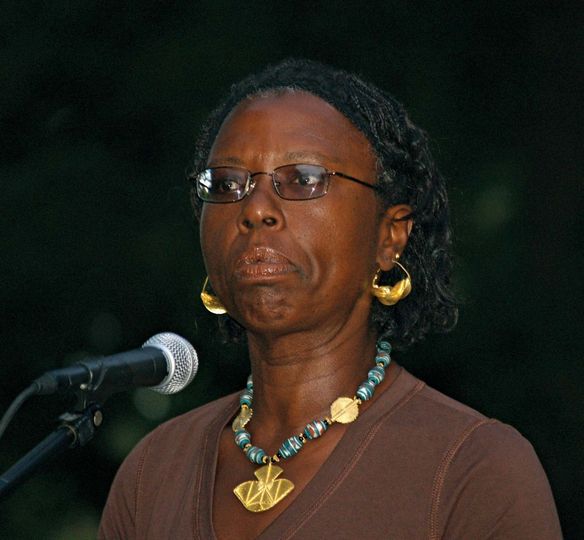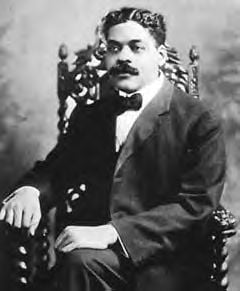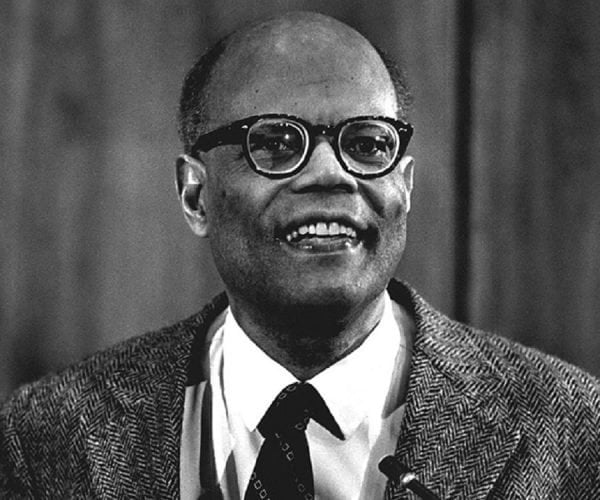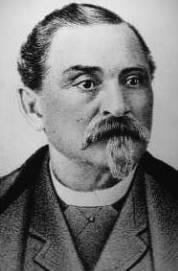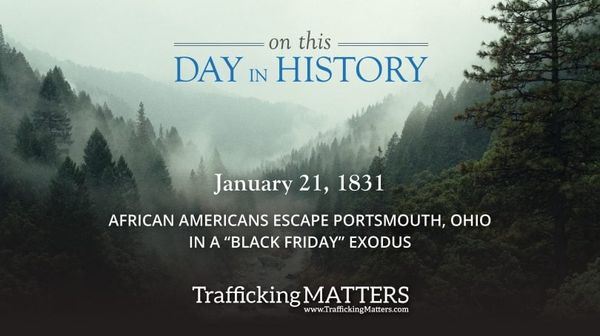GM – FBF – Today’s American Champion was was an American abolitionist, inventor, iron moulder and industrialist. Parker, who was African American, helped hundreds of slaves to freedom in the Underground Railroad resistance movement based in Ripley, Ohio. He saved and rescued fugitive slaves for nearly fifteen years. He was one of the few black people to patent an invention before 1900. His house in Ripley has been designated a National Historic Landmark and restored.Today in our History – January 30, 1900 – John P. Parker (1827 – January 30, 1900) died.Parker was born in Norfolk, Virginia 1827. He was the son of a slave mother and white father. Born into slavery under the principle of partus sequitur ventrem, at the age of eight John was forced to walk to Richmond, where he was sold at the slave market to a physician from Mobile, Alabama. While working at the doctor’s house as a domestic servant, John was taught to read and write by the doctor’s family, although the law forbade slaves’ being educated. During his apprenticeship in a foundry, John attempted escape to New Orleans by riverboat and had conflicts with officials. He asked one of the doctor’s patients, a widow, to purchase him. After taking title to him, she allowed him to hire out to earn money, and he purchased his freedom from her for $1,800 in 1845. He earned the money through his work in two of Mobile’s iron foundries and occasional odd jobs. Parker left the South, first settling in Jeffersonville, Indiana, then Cincinnati, Ohio, where there were larger free black communities and jobs in the bustling port. There in 1848 he married Miranda Boulden, free born in the city. They moved to Ripley, a growing center of abolitionist activity, and had six children together:• Hale Giddings Parker, b. 1851, graduated from Oberlin College’s classical program and became the principal of a black school in St. Louis; later he studied law and in 1894 moved to Chicago to become an attorney• Cassius Clay Parker, b. 1853 (the first two sons were named after prominent abolitionists); he studied at Oberlin College and became a teacher in Indiana.• Horatio W. Parker, b. 1856, became a principal of a school in Illinois; he later taught in St. Louis.• Hortense Parker, b. 1859; she and her two sisters all studied music; Hortense was among the first African-American graduates of Mount Holyoke College; after marriage in 1913, she moved to St. Louis and continued to teach music. Her husband was a college graduate who served as principal of a school.• Portia, b. 1865, became a music teacher• Bianca, b. 1871, became a music teacherThe parents ensured that all their children were educated. Two generations from slavery, all six went to college and entered the middle class. In Ripley, Parker joined the resistance movement, known as the Underground Railroad, whose members aided slaves escaping across the river from Kentucky to get further North to freedom; some chose to go to Canada. He guided hundreds of slaves along their way, continuing despite a $1,000 bounty placed on his head by slaveholders. The federal Fugitive Slave Act of 1850 increased the penalties for such activism. Parker risked his own freedom every time he went to Kentucky to help slaves to escape. During the Civil War, he recruited a few hundred slaves for the Union Army. The historian Stuart Seely Sprague has researched much information about Parker and his life. Beginning as an iron moulder, Parker developed and patented a number of mechanical and industrial inventions, including the John P. Parker tobacco press and harrow (or pulverizer), patented in 1884 and 1885.He had invented the pulverizer while still a young man in Mobile in the 1840s. Parker was one of the few blacks to patent an invention before 1900. In 1865 with a partner, he bought a foundry company, which they called the Ripley Foundry and Machine Company. Parker managed the company, which manufactured engines, Dorsey’s patent reaper and mower, and sugar mill. In 1876 he brought in a partner to manufacture threshers, and the company became Belchamber and Parker. Although they dissolved the partnership two years later, Parker continued to grow his business, adding a blacksmith shop and machine shop. In 1890, after a destructive fire at his first facility, Parker built the Phoenix Foundry. It was the largest between Cincinnati and Portsmouth, Ohio. • The John P. Parker Historical Society was formed in 1996 to preserve and interpret knowledge of John Parker and his family; it has worked to restore the house and operate it as a museum with exhibits and educational programs.• His autobiography, a slave narrative, was published in 1996 as HIS PROMISED LAND: THE AUTOBIOGRAPHY OF JOHN P. PARKER, FORMER SLAVE AND CONDUCTOR ON THE UNDERGROUND RAILROAD. In the 1880s, Parker gave interviews to the journalist Frank Moody Gregg of the Chattanooga News, who had been researching the resistance movement.He never published his manuscript, and the historian Stuart Seely Sprague found Gregg’s manuscript and notes in Duke University archives. He edited the memoir for publication, to keep Parker’s language, and added a detailed biography in the preface.• The John P. Parker House was designated a National Historic Landmark in 1997 by the U.S. Department of the Interior.• John P. Parker School, in Cincinnati, Ohio, is a pre-kindergarten through 6th grade school named after him.Research more about this great American Champion and share it with your babies. Make it a champion day!
Author: Herry Chouhan
GM – FBF – Today’s American Champion became the first African-American woman to practice law before the United States Supreme Court on January 29, 1926.
GM – FBF – Today’s American Champion became the first African-American woman to practice law before the United States Supreme Court on January 29, 1926. She was one of the most prominent advocates of a landmark piece of legislation that helped secure rights and economic mobility for sharecroppers in the South, the Bankhead-Jones Act.Today in our History – January 29, 1926 – Violette Neatley – the first African American female to practice law before the Supreme court.On January 29, 1926, lawyer Violette Neatley Anderson became the first African American female attorney admitted to practice before the United States Supreme Court.She was also the first African American woman appointed as an assistant prosecutor in Chicago.For 15 years, Anderson worked as a court reporter from 1905 to 1920. As she worked as a reporter, she soon found interest in law and decided to start taking law classes.At the time, she was the only woman in her class and the first woman in Illinois to graduate from the Chigaco Law School, earning her LL.B. in 1920.Born in London, England, on July 16, 1882, to Richard and Marie Neatley, Anderson and her family moved to Chicago, Illinois at a young age.She graduated from a Chicago high school in 1899 and went on to the Chicago Athenaeum and the Chicago Seminar of Sciences.After receiving her law degree, she began a private practice after graduation, becoming the first black woman to practice law in the U.S. District Court Eastern Division.Anderson was one of the first women of any race in the state of Illinois to engage in private law practice. Her success in defending a woman accused of murdering her husband in the courtroom resulted in her being appointed to an assistant prosecutor in Chicago. She was both the first African American and the first woman appointed to that post.She served as the first female city prosecutor in Chicago from 1922 to 1923 and after five years of practice before the high court of Illinois, Anderson was admitted to practice for the Supreme Court of the United States. She became the first black woman to attain that stature.Anderson was great at what she does; she was a trailblazer who paved the way for many women who came after her. She was reportedly very active in lobbying the US Congress for the passage of the Bankhead-Jones Act, which provided sharecroppers and tenant farmers with low-interest loans to buy small farms. Fortunately, the bill that was designed to move poor agriculturalists from farmworkers to farm owners was signed into law in 1937 by President Franklin D. Roosevelt.Anderson was a member of the Federation of Colored Women’s Clubs and the Chicago Council of Social Agencies. She also served as the first vice-president of the Cook County Bar Association and was the eighth Grand Basileus (President) of Zeta Phi Beta Sorority, Incorporated.She was secretary of Idlewild Lot Owners Association, an executive board member of the Chicago Council of Social Agencies, and was a member of the League of Women Voters.On December 24, 1937, Anderson died in her Chicago home. She willed her property at the all-black resort in Idlewild, Michigan to Zeta Phi Beta Sorority who to date continues to honor her legacy annually during the month of April with “Violette Anderson Day.” Research more about this great American Champion and share it with your babies. Make it a champion day!
GM – FBF – Today’s American Champion was born on June 30, 1903, was part of a small but active cadre of African American Communists operating in the Pacific Northwest during the 1930s.
GM – FBF – Today’s American Champion was born on June 30, 1903, was part of a small but active cadre of African American Communists operating in the Pacific Northwest during the 1930s. Originally from the East Coast, He the Lenin School in Moscow in the late 1920s. In 1932 he was sent to Seattle by the Communist Party USA’s Central Committee in New York to serve on a three-member District Executive Committee. That same year he helped organize one of the largest demonstrations of unemployed workers in the state’s history. He reportedly clashed with Party members in the Northwest who, according to Bellingham organizer Eugene Dennett, considered him overbearing and doctrinaire. In 1933 he was replaced, along with the other two members of the Executive Committee, by a new Executive Secretary.Today in our History – January 28, 1990 – Hutchen R. Hutchins died.Hutchins stayed in Seattle and retained a Marxist political orientation, although it is unclear whether he remained an official member of the Communist Party. Throughout the latter half of the 1930s he served as president of the Negro Workers Council, an Urban League program designed to provide education and support for working-class African Americans. Susie Revels Cayton, the matriarch of the influential Cayton family and herself a devoted Communist, was Hutchins’s vice-president on the Council.In 1940, in response to the Boeing Company and the International Association of Machinists longstanding policy of racial exclusion, Hutchins organized a broad coalition of African American community leaders into the Committee for the Defense of Negro Labor’s Right to Work at the Boeing Airplane (CDNL). Hutchins used his position as a correspondent for Seattle’s African American newspaper, The Northwest Enterprise, to publicize the CDNL’s campaign. Both the Boeing Company and the IAM continued to resist integration even after Franklin Roosevelt’s June 1941 executive order prohibiting hiring discrimination in defense industries.However, due in large measure to Hutchins’ work on the CDNL and for The Northwest Enterprise, Boeing hired its first African American employees in 1942 and the IAM, after a protracted internal struggle, removed discriminatory language from its international charter in 1946.The CDNL marked the height of Hutchins’s public visibility as a civil rights leader. However, he remained active in struggles for worker rights and racial justice over at least the next thirty years, including the United Black Construction Workers efforts to integrate the Seattle Building Trades Unions in the late 1960s and early 1970s. Hutchen R. Hutchins died in Seattle on January 28, 1990. He was 86. Research more about this great American Champion and share it with your babies. Make it a champion day!
GM – FBF – Today’s American Champion was an American singer, songwriter, and dancer.
GM – FBF – Today’s American Champion was an American singer, songwriter, and dancer. Dubbed the “King of Pop”, he is regarded as one of the most significant cultural figures of the 20th century. Through stage and video performances, he popularized complicated dance techniques such as the moonwalk, to which he gave the name, and the robot. His sound and style have influenced artists of various genres, and his contributions to music, dance, and fashion, along with his publicized personal life, made him a global figure in popular culture for over four decades. He is the most awarded artist in the history of popular music.The eighth child of the Jackson family, he made his professional debut in 1964 with his elder brothers Jackie, Tito, Jermaine, and Marlon as a member of the Jackson 5. Jackson began his solo career in 1971 while at Motown Records, and rose to solo stardom with his fifth studio album Off the Wall (1979) during the peak of the disco era. By the early 1980s, he became a dominant figure in popular music. His music videos, including those for “Beat It”, “Billie Jean”, and “Thriller” from his sixth studio album Thriller (1982), are credited with breaking racial barriers and transforming the medium into an art form and promotional tool.His prominence propelled him and the television channel MTV into cultural phenomenons of 1980s pop culture. At the 1984 Grammy Awards, Thriller won a record-breaking eight Grammy Awards, including Album of the Year. Jackson continued to innovate with videos on the global best-seller albums Bad (1987), Dangerous (1991), and HIStory: Past, Present and Future, Book I (1995).Starting in the late 1980s, he became a figure of controversy and speculation due to his changing appearance, relationships, behavior and lifestyle. In 1993, he was accused of sexually abusing the child of a family friend. The lawsuit was settled out of court, and he was not indicted.In 2005, he was tried and acquitted of further child sexual abuse allegations and several other charges. Four years later, while preparing for a series of comeback concerts, This Is It, he died from an overdose of propofol administered by his personal physician, Conrad Murray. Fans around the world expressed their grief, and his public memorial service was broadcast live.In August 2009, the Los Angeles County Coroner ruled that his death was a homicide, and Murray was convicted of involuntary manslaughter in November 2011. Seven years later, the documentary Leaving Neverland, which detailed allegations of child sexual abuse, led to another media backlash against him.He is one of the best-selling music artists of all time, with estimated sales of over 350 million records worldwide.[nb 1] Thriller is the best-selling album of all time, with estimated sales of 66 million copies worldwide. In addition, the remix album Blood on the Dance Floor: HIStory in the Mix (1997) is the best-selling remix album of all time.Bad was the first album to produce five Billboard Hot 100 number-one singles. He had 13 Billboard Hot 100 number-one singles, more than any other male artist in the Hot 100 era, and was also the first artist to have a top ten single in the Billboard Hot 100 in five different decades. He received 13 Grammy Awards, the Grammy Legend and Grammy Lifetime Achievement awards, six Brit Awards, a Golden Globe Award, and 39 Guinness World Records, including the “Most Successful Entertainer of All Time”.His inductions include the Rock and Roll Hall of Fame twice, the Vocal Group Hall of Fame, the Songwriters Hall of Fame, the Dance Hall of Fame (the only recording artist to be inducted), and the Rhythm and Blues Music Hall of Fame. In 2016, his estate earned $825 million, the highest yearly amount for a celebrity ever recorded by Forbes.Today in our History – January 27, 1984 – Michael Joseph Jackson (August 29, 1958 – June 25, 2009 was burned during a commercial shooting from a pyrotechnic explosion.Music megastar Michael Jackson was rushed to hospital in Los Angeles on this day in 1984, after being set on fire during the filming of a TV commercial.The 25-year-old, later dubbed the ‘King of Pop’, was filming a staged concert performance for a new advertising campaign by Pepsi with members of his family, when sparks from a pyrotechnic explosion ignited his hair.Jackson briefly continued performing, then hurried to the back of the set where he was pushed to the ground and extinguished by stage hands and his brothers.The singer was initially taken to Cedars-Sinai Medical Centre, where he was “noted to be quite shaken up with palm-sized area of second-degree and small area of third-degree burns” by his doctor, Steven Hoefflin.His wounds were treated, and then he was given a number of different painkillers and prescribed a powerful sedative to calm his nerves and help him sleep.Jackson was arguably at the very peak of his career when the incident happened. His album Thriller had been released to huge acclaim at the end of 1982 and he would go on to win a record eight Grammy awards in February.He and his brothers had signed a promotional deal with Pepsi worth $5 million in November the previous year. After the accident, Pepsi paid Jackson $1.5 million in compensation, which the pop star donated to the Brotman Medical Centre, one of the hospitals in which he was treated.The raw footage shot for the Pepsi commercial was shot on Jan. 27, 1984, at Los Angeles’ Shrine Auditorium.Jackson can be seen on the shoot’s sixth take, descending a flight of stairs when the pyrotechnics on stage go off early and engulf the singer’s head in flames.At first Jackson, wearing a sequined shirt, jacket and signature glove — continues to dance unaware as flames and smoke emanate from his hair. As the fireball grows around his head, he is set upon by members of the crew who tamp out the flames.In the video, one can easily observe a large red bald spot in the center of Jackson’s head after the flames have been extinguished.Jackson suffered second- and third-degree burns to his scalp and the back of his head, prompting him to begin using and then abusing painkillers, he would later admit.Us Weekly, which contains pictures of the incident, hits newsstands Friday. The magazine, which has not said how it obtained the Pepsi commercial footage, suggested that the accident kicked off Jackson’s obsession with plastic surgery.The then 25-year-old Jackson was taken by ambulance to Cedars-Sinai Medical Center in Los Angeles.”Michael is quite shocked. He’s fortunate that there were no injuries to his face,” Dr. Steve Hoefflin told reporters at the time of the accident. “At this time, I don’t think skin grafts are necessary.”Hoefflin is now retired and could not be reached by ABC News.com.“Within two weeks of the fire, Michael was back on his feet and in good spirits,” Jay Coleman, the agent who repped Jackson when he cut the deal with Pepsi, told ABC News.com.Coleman was not at the shoot but said the accident made front-page news, and the ads were run on the television news weeks before they officially ran as paid spots beginning in February 1984. Reserach more about this great American Champion and share it with your babies. Make it a champion day!
GM – FBF – Today’s American Champion is an American viral immunologist at the Vaccine Research Center (VRC) at the National Institute of Allergy and Infectious Diseases, National Institutes of Health (NIAID NIH) based in Bethesda, Maryland.
GM – FBF – Today’s American Champion is an American viral immunologist at the Vaccine Research Center (VRC) at the National Institute of Allergy and Infectious Diseases, National Institutes of Health (NIAID NIH) based in Bethesda, Maryland.Corbett went to Oak Lane Elementary School and A.L. Stanback Middle School. Her fourth-grade teacher, Myrtis Bradsher, recalls recognizing Corbett’s talent at an early age and encouraging Kizzy’s mother to place her in advanced classes. In December 2020 the Institute’s Director Anthony Fauci, said: “She is an African American scientist who is right at the forefront of the development of the vaccine.” Today in our History – January 26, 1986 – Kizzmekia “Kizzy” Shanta Corbett is born.Corbett was born in Hurdle Mills, North Carolina to Rhonda Brooks. She grew up in Hillsborough, a rural town in North Carolina, where she had a large family of step-siblings and foster siblings. Corbett went to Oak Lane Elementary School[9] and A.L. Stanback Middle School. Her fourth grade teacher, Myrtis Bradsher, recalls recognizing Corbett’s talent at an early age and encouraging Kizzy’s mother to place her in advanced classes. “I always thought she is going to do something one day. She dotted i’s and crossed t’s. The best in my 30 years of teaching,” Bradsher said in a 2020 interview with The Washington Post.In 2004, Corbett graduated from Orange High School in Hillsborough, North Carolina. In 2008, Corbett received a B.S. in biological sciences and sociology from the University of Maryland, Baltimore County (UMBC), as a student in the Meyerhoff Scholarship Program. In 2014, Corbett received a PhD in microbiology and immunology from the University of North Carolina at Chapel Hill. While in high school, Corbett realized that she wanted to pursue a scientific career, and as part of a program called ProjectSEED, spent her summer holiday working in research laboratories, one of which was at UNC’s Kenan Labs with organic chemist James Morkin. In 2005, she was a summer intern at SUNY StonyBrook in Gloria Viboud’s lab where she studied Yersinia pseudotuberculosis pathogenesis.From 2006 to 2007, she worked as a lab tech in Susan Dorsey’s lab at the University of Maryland School of Nursing.After earning her bachelor’s degree, from 2006 to 2009, Corbett was a biological sciences trainer at the National Institutes of Health (NIH), where she worked alongside Dr. Barney Graham. At the NIH, Corbett worked on the pathogenesis of respiratory syncytial virus as well as on a project focused on innovative vaccine platform advancement. From 2009 to 2014, Corbett studied human antibody responses to dengue virus in Sri Lankan children under the supervision of Aravinda de Silva at the University of North Carolina at Chapel Hill. She studied how people produce antibodies in response to dengue fever, and how the genetics of dengue fever impact the severity of a disease. From April to May 2014, as part of her research for her dissertation, Corbett worked as a visiting scholar at Genetech Research Institute in Colombo, Sri Lanka. In October 2014, Corbett became a research fellow, working as a viral immunologist, at the NIH. Her research aims to uncover mechanisms of viral pathogenesis and host immunity. She specifically focuses on the development of novel vaccines for coronaviridae. Her early research considered the development of Severe Acute Respiratory Syndrome (SARS) and Middle East Respiratory Syndrome (MERS) vaccine antigens.During this time, she identified a simple way to make spike proteins that are stabilized in a conformation that renders them more immunogenic and manufacturable, in collaboration with researchers at Scripps Research Institute and Dartmouth College. At the onset of the COVID-19 pandemic, Corbett started working on a vaccine to protect people from coronavirus disease. Recognizing that the virus was similar to severe acute respiratory syndrome coronavirus, Corbett’s team utilized previous knowledge of optimal coronavirus S proteins to tackle the novel coronavirus.S proteins form a “crown” on the surface of coronaviruses and are crucial for the engagement of host cell receptors and the initiation of membrane fusion in coronavirus disease. This makes them a particularly vulnerable target for coronavirus prophylactics and therapeutics. Based on her previous research, Corbett’s team, in collaboration with investigators at UT Austin, transplanted stabilizing mutations from SARS-CoV S protein into SARS-CoV-2 spike protein.She was part of the NIH team that helped solve the cryogenic electron microscopy (CryoEM) structure of the SARS-CoV-2 spike protein. Her prior research suggested that messenger RNA (mRNA) encoding S protein could be used to excite the immune response to produce protective antibodies against coronavirus disease 2019. To manufacture and test the COVID-19 vaccine Corbett’s team partnered with Moderna, a biotechnology company, to rapidly enter animal studies. Subsequently, the vaccine entered Phase 1 clinical trial only 66 days after the virus sequence was released. The trial, to be completed in at least 45 people, is a dose escalation study in the form of two injections separated by 28 days. Corbett’s work afforded her the opportunity to be a part of the National Institutes of Health team that welcomed Donald Trump to the Dale and Betty Bumpers Vaccine Research Center in March 2020. Corbett has called for the public to be cautious and respectful of one another during the coronavirus pandemic, explaining that regular hand washing and sneezing into one’s elbow can help to minimize the spread of the virus. She has also emphasized that we should not stigmatize people who may be from areas where the virus started.When asked about her involvement with the development of the COVID-19 vaccine, Corbett said, “To be living in this moment where I have the opportunity to work on something that has imminent global importance…it’s just a surreal moment for me”.Corbett regularly shares information on Twitter and takes part in programs to inspire youth in underserved communities. Research more about this wonderful American Champion and share it with your babies. Make it a champion day!
GM – FBF – Today’s American Champion was an American novelist, known for novels including The Women of Brewster Place (1982), Linden Hills (1985) and Mama Day (1988).
GM – FBF – Today’s American Champion was an American novelist, known for novels including The Women of Brewster Place (1982), Linden Hills (1985) and Mama Day (1988).Today in our History – January 25, 1950 Gloria Naylor (January 25, 1950 – September 28, 2016) was born.Naylor was born in New York on January 25, 1950, the oldest child of Roosevelt Naylor and Alberta McAlpin. The Naylors, who had been sharecroppers in Robinsonville, Mississippi, had migrated to Harlem to escape life in the segregated South and seek new opportunities in New York City. Her father became a transit worker; her mother, a telephone operator. Even though Naylor’s mother had little education, she loved to read, and encouraged her daughter to read and keep a journal. Before her teen years, Gloria began writing prodigiously, filling many notebooks with observations, poems, and short stories. In 1963, Naylor’s family moved to Queens and her mother joined the Jehovah’s Witnesses. An outstanding student who read voraciously, Naylor was placed into advanced classes in high school, where she immersed herself in the work of nineteenth century British novelists.Her educational aspirations, however, were delayed by the shock of the assassination of Dr. Martin Luther King Jr. in her senior year. She decided to postpone her college education, becoming a missionary for the Jehovah’s Witnesses in New York, North Carolina, and Florida instead. She left seven years later as “things weren’t getting better, but worse.” From 1975 to 1981 Naylor attended Medgar Evers College and then Brooklyn College while working as a telephone operator, majoring in nursing before switching to English. It was at that time that she read Toni Morrison’s novel The Bluest Eye, which was a pivotal experience for her. She began to avidly read the work of Zora Neale Hurston, Alice Walker, and other black women novelists, none of which she had been exposed to previously. She went on to earn an M.A. in African-American studies at Yale University; her thesis eventually became her second published novel, Linden Hills. Naylor earned her bachelor’s degree in English at Brooklyn College of the City University of New York in 1981. She obtained a master’s degree in African American Studies from Yale University in 1983. She was an honorary member of Delta Sigma Theta sorority.Naylor’s debut novel, The Women of Brewster Place, was published in 1982 and won the 1983 National Book Award in the category First Novel. It was adapted as a 1989 television miniseries of the same name by Oprah Winfrey’s Harpo Productions.Naylor’s work is featured in such anthologies as Breaking Ice: An Anthology of Contemporary African-American Fiction (ed. Terry McMillan, 1990), Calling the Wind: Twentieth-Century African-American Short Stories (ed. Clarence Major, 1992) and Daughters of Africa (ed. Margaret Busby, 1992).During her career as a professor, Naylor taught writing and literature at several universities, including George Washington University, New York University, Boston University, University of Kent, University of Pennsylvania and Cornell University. In 1989 Naylor was the Zale Writer-In-Residence at Newcomb College of Tulane University. There she performed a reading of her works as well as being publicly interviewed by Filipe Smith of the Tulane English Department. In 2009, Naylor donated her archives to Sacred Heart University. The collection is currently on loan at Lehigh University for digitization. Naylor died of a heart attack on September 28, 2016, while visiting St. Croix, United States Virgin Islands. She was 66. During her studies at Brooklyn College, Naylor became immersed in the works of African-American female authors such as Zora Neale Hurston, Alice Walker, and especially Toni Morrison. Drawing inspiration from these authors, Naylor began writing stories centered on the lives of African-American women, which resulted in her first novel, The Women of Brewster Place. Research more about this great American Champion and share it with your babies. Make it a champion day!
GM – FBF – Today’s American Champion was a historian, writer, and activist.
GM – FBF – Today’s American Champion was a historian, writer, and activist. He was a Puerto Rican of African and German descent who moved to the United States and researched and raised awareness of the great contributions that Afro-Latin Americans and Afro-Americans have made to society. He was an important intellectual figure in the Harlem Renaissance. Over the years, he collected literature, art, slave narratives, and other materials of African history, which were purchased to become the basis of his center named in his honor, at the New York Public Library (NYPL) branch in Harlem. Today in our History – January 24, 1874 – Arturo Alfonso Schomburg (January 24, 1874 – June 10, 1938) was born.Schomburg was born on January 10, 1874, in Santurce, Puerto Rico to Maria Josefa, a Black midwife from St. Croix, and Carlos Federico Schomburg, a merchant and son of a German immigrant to Puerto Rico.As a child, Schomburg was told by one of his teachers that people of African descent had no history and no achievements. As Elinor Des Verney Sinnette explained in her book, “Arthur Alfonso Schomburg: Black Bibliophile & Collector”—the first full biography of Schomburg, published in 1989—about the challenges Schomburg faced during primary school:”Arturo became aware of racism fairly early in life. His fifth-grade teacher is said to have told him that black people had no history, no heroes, no great moments—and because of that remark, young Arturo became fired with an ambition to find evidence of his people’s past.”Sinnette also noted that Schomburg may have been influenced by a need to explore his sense of identity. She wrote that Schomburg’s White classmates spoke of the “courageous deeds” of their ancestors. “These comments and boasts raised questions for Arturo about the accomplishments of his ancestors,” Sinnette wrote, adding:”In order to match his white friends’ stories, Schomburg began to inquire about the history of people of color, not just in Puerto Rico, but throughout the Caribbean. The Haitian revolution captured his imagination and the revolutionary black revolutionary Toussaint Louverture became one of his early heroes.”These events inspired Schomburg to dedicate the rest of his life to discovering the important accomplishments of people of African descent.Schomburg attended Instituto Popular in San Juan, Puerto Rico, where he studied commercial printing. He later attended St. Thomas College in the Danish Virgin Islands, where he studied Negro Literature.By 1891, Schomburg felt that “his destiny did not lie in the Caribbean” and on April 17 of that year he moved to New York City, in search of better opportunities and a better future, Sinnette noted.Once in New York, Schomburg became an activist with the Revolutionary Committee of Puerto Rico. As an activist with this organization, Schomburg played an integral role in fighting for Puerto Rico and Cuba’s independence from Spain.Living in Harlem, Schomburg coined the term “afroborinqueno” to celebrate his heritage as a Latino of African descent. Black people faced great discrimination in New York City in the 1890s and early 1900s, according to the Schomburg Center, a part of the New York Public Library. They were “denied work as longshoremen, street cleaners, baggage handlers, cement carriers, and garment workers,” the center notes.Despite these prevailing conditions of racial discrimination and restrictions, Schomburg was able to work a variety of jobs, including an elevator operator, printer, Spanish teacher, porter, and clerk at a law firm. During some of his early time in New York, Schomburg attended night classes at Manhattan Central High School. Though Schomburg was able to find employment in jobs generally denied to other Black people due to discrimination, he still experienced racism. For example, Schomburg joined—and was a long-term member of—the Prince Hall Lodge, a Black Masonic group in New York City. But, as biographer Sinnette wrote:”White members of America’s freemasonry lodges resisted recognizing black Masons. To support their racist attitude, white Masons branded Prince Hall masonry as illegitimate.”Schomburg developed a passion for recording the history of the Prince Hall Masons and, in general, for identifying artifacts that disproved the notion that people of African descent had no history or achievements.Schomburg’s first article, “Is Hayti Decadent?” appeared in a 1904 issue of The Unique Advertiser. By 1909, Schomburg wrote a profile on the poet and independence fighter Gabriel de la Concepcion Valdez titled “Placido a Cuban Martyr.”In the early 1900s, Black men such as Carter G. Woodson and W.E.B. Du Bois were encouraging others, including Schomburg, to learn Black history. During this time, Schomburg established the Negro Society for Historical Research in 1911 with John Howard Bruce. The purpose of the group was to support the research efforts of Black United States, African, and Caribbean scholars. As a result of Schomburg’s work with Bruce, he was appointed the president of the American Negro Academy In this leadership position, Schomburg co-edited the “Encyclopedia of the Colored Race.”Little has been recorded about how Schomburg conducted his research and gathered his artifacts during these years, but Sinnette noted that he received a great deal of help and guidance from Black intellectuals and writers, such as Du Bois and Bruce. Nevertheless, Schomburg managed to gather sufficient artifacts, photos, articles, and other types of information that he wrote a number of important articles about Black history.Schomburg’s essay “The Negro Digs Up His Past” was published in a special issue of Survey Graphic, which promoted the artistic endeavors of Black writers. The essay was later included in the anthology “The New Negro” edited by Alain Locke. Schomburg’s essay influenced many Black people to begin studying their past. In it, Schomburg wrote that “Black people have to dig deep into their own history in order to affirm themselves in the face of ongoing oppression,” according to Polite on Society, a website that focuses on Black literature, social, and political commentary. Schomburg wrote:“Though it is orthodox to think of America as the one country where it is unnecessary to have a past, what is luxury for the nation as a whole becomes a prime social necessity for the Negro.”Schomburg also wrote in the essay that in the course of history, the Black person has been “an active collaborator, and often a pioneer, in the struggle for his own freedom and advancement.”In 1926, the New York Public Library purchased Schomburg’s collection of literature, art, and other artifacts for $10,000. Schomburg was appointed as the curator of the Schomburg Collection of Negro Literature and Art at the 135th Street branch of the New York Public Library. Schomburg used the money from the sale of his collection to add more artifacts of African history to the collection and traveled to Spain, France, Germany, England, and Cuba.As with his earlier efforts to gather artifacts, biographers have recorded little about how and where Schomburg collected information during his 1926 trip to Europe. Another Schomburg biographer, Vanessa K. Valdés, did briefly explain that Schomburg traveled to Europe for several months:”…recovering documents from one of Spain’s most prominent archives, the Archivo de las Indias, among others, and revealing the presence of men and women of African descent in the Spanish-speaking Americas and the Iberian peninsula prior to the English establishment of Jamestown in 1619. He also salvaged the life stories of African-descended scholars, writers, and church officials living in the sixteenth, seventeenth, and eighteenth centuries in the Americas and Europe.”In addition to his position with the New York Public Library, Schomburg was appointed a curator of the Negro Collection at Fisk University’s library. Throughout Schomburg’s career, he was honored with memberships in many Black organizations. including the Men’s Business Club in Yonkers, New York, Loyal Sons of Africa, and Prince Hall Masonic Lodge.Schomburg died in 1938 in Brooklyn, New York, and is interred in Cypress Hills Cemetery. In 1940, the New York Public Library renamed its entire Black history collection as the Schomburg Collection. In 1972, the 135th Street branch of the library was renamed as the Schomburg Center for Research in Black Culture. The center, on its website, explains its purpose and sums up Schomburg’s legacy:”The Schomburg Center for Research in Black Culture has preserved, protected, and fostered a greater understanding of the Black experience through its collections, exhibitions, programs, and scholarship. In response to the uprisings across the globe demanding justice for Black lives, the Schomburg Center has created a Black Liberation Reading List. The titles on the list represent books we and the public turn to regularly as activists, students, archivists, and curators, with a particular focus on books by Black authors and those whose papers we steward.” Research more about this great American Champion and share it with your babies. Make it a champion day!
GM – FBF – Today’s American Champion was a Saint Lucian economist and the James Madison Professor of Political Economy at Princeton University.
GM – FBF – Today’s American Champion was a Saint Lucian economist and the James Madison Professor of Political Economy at Princeton University. Lewis was known for his contributions in the field of economic development. In 1979 he was awarded the Nobel Memorial Prize in Economic Sciences.Today in our History – January 23, 1915 – Sir William Arthur Lewis (23 January 1915 – 15 June 1991) was born.Arthur Lewis was born in Saint Lucia, then still part of the British Windward Islands federal colony, the fourth of five children of George and Ida Lewis. His parents had migrated from Antigua shortly after the turn of the century.George Lewis died when Arthur turned seven, and Ida raised their five children alone. Arthur was a gifted student and was promoted two classes ahead of his age. After finishing school at the age of 14, Lewis worked as a clerk, while waiting to take his university entrance exam. During this time he became friends with Eric Williams, the future first prime minister of Trinidad and Tobago, and the two remained lifelong friends. After graduating, Lewis’s initial career choice was to become an engineer. He made the eventual switch to economics because the governments and companies of the West Indies, such as Saint Lucia, refused to hire people of color. At the age of 18, he earned a scholarship to attend the London School of Economics (LSE). He was the first black individual to gain acceptance at LSE. While enrolled, Lewis would achieve similar success as he did at grade school. Lewis’s academic superiority was noticed and admired by his peers and professors. While at LSE, Lewis had the opportunity to study under the likes of John Hicks, Arnold Plant, Lionel Robbins, and Friedrich Hayek. After earning his Bachelor of Science degree in 1936 and a Ph.D. degree in 1940 at the LSE under supervision of Arnold Plant, Lewis worked as a member of the staff at the LSE until 1948.In 1947, Lewis married Gladys Jacobs, and they had two daughters together. That year he was selected as a lecturer at the Victoria University of Manchester, and moved there with his family.He taught at Manchester until 1957. During this period, he developed some of his most important concepts about the patterns of capital and wages in developing countries.He particularly became known for his contributions to development economics, of great interest as former colonies began to gain independence from their European colonizers.Lewis served as an economic advisor to numerous African and Caribbean governments, such as Nigeria, Ghana, Trinidad and Tobago, Jamaica, and Barbados. When Ghana gained independence in 1957, Lewis was appointed as the country’s first economic advisor. He helped draw up its first Five-Year Development Plan (1959–1963). In 1959 Lewis returned to the Caribbean region when appointed Vice Chancellor of the University of the West Indies. In 1963 he was knighted by the British government for his achievements and for his contributions to economics. That year, he was also appointed a University Professor at Princeton University and moved to the United States. Lewis worked at Princeton for the next two decades, teaching generations of students until his retirement in 1983. In 1970 Lewis also was selected as the first president of the Caribbean Development Bank, serving in that capacity until 1973. Lewis received the Nobel prize in Economics in 1979, sharing it with Theodore Schultz, “for their pioneering research into economic development research with particular consideration of the problems of developing countries”.Lewis died on 15 June 1991 in Bridgetown, Barbados. He was buried in the grounds of the St. Lucian community college named in his honor.Labor in the West Indies: The Birth of a Worker’s Movement, first published by the Fabian Society in 1939, was an account of the 1930’s labor movement in the Caribbean.It remained the only work published on the Caribbean-wide movement and the Labor Rebellions in the English-speaking Caribbean for decades. The book was republished by John La Rose and Sarah White at New Beacon Books in February 1978. Lewis published in 1954 what was to be his most influential development economics article, “Economic Development with Unlimited Supplies of Labor” (Manchester School). In this publication, he introduced what came to be called the dual sector model, or the “Lewis model”.Lewis combined an analysis of the historical experience of developed countries with the central ideas of the classical economists to produce a broad picture of the development process. In his theory, a “capitalist” sector develops by taking labor from a non-capitalist backward “subsistence” sector. The subsistence sector is governed by informal institutions and social norms so that producers do not maximize profits and workers can be paid above their marginal product.At an early stage of development, the “unlimited” supply of labor from the subsistence economy means that the capitalist sector can expand for some time without the need to raise wages. This results in higher returns to capital, which are reinvested in capital accumulation. In turn, the increase in the capital stock leads the “capitalists” to expand employment by drawing further labor from the subsistence sector. Given the assumptions of the model (for example, that the profits are reinvested and that capital accumulation does not substitute for skilled labor in production), the process becomes self-sustaining and leads to modernization and economic development. The point at which the excess labor in the subsistence sector is fully absorbed into the modern sector, and where further capital accumulation begins to increase wages, is sometimes called the Lewisian turning point. It has recently been widely discussed in the context of economic development in China. Lewis published The Theory of Economic Growth in 1955 in which he sought to “provide an appropriate framework for studying economic development,” driven by a combination of “curiosity and of practical need.” During the Industrial Revolution, England was experiencing the worst economic turmoil of its time. It wouldn’t be until an economic enlightenment would take place that cities began to shift towards factories and labor-intensive methods of production as they experienced giant shifts in the labor and agriculture markets, thus, eventually leading to higher production, and higher income.Lewis theorized if England could turn its misfortune around, the same could be done for developing countries around the world. His theories would prove true for some countries such as Nigeria and Barbados as they would see some economic development.Research more about this great American Champion and share it with your babies. Make it a champion day!
GM – FBF Today’s American Champion was an escaped slave who became a wealthy businessman and civil-rights pioneer in Colorado.
GM – FBF Today’s American Champion was an escaped slave who became a wealthy businessman and civil-rights pioneer in Colorado. He is a member of the Colorado Black Hall of Fame, the Colorado Business Hall of Fame, and has a stained-glass portrait in the House Chamber of the Colorado State Capitol.Today in our History – January 22, 1822 – Barney Lancelot Ford (January 22, 1822 – December 22, 1902) was born.Ford was born in Virginia in 1822 to a white plantation owner and a slave woman named Phoebe. Barney was taught how to read and write by an older slave. Ford was hired out as a teenager to work on a Mississippi riverboat, which he escaped from in 1848 , simply by walking off the boat when it was docked at Quincy, Illinois. Aided by members of the Underground Railroad, he made his way to Chicago. While in Chicago Ford met Julia Lyoni. They were soon married in 1849. When Barney was born his mother didn’t give him a middle and last name. So Julia helped him choose one. One day Barney saw a locomotive named Lancelot Ford, so that became his middle and last name.In 1851 Ford decided to prospect for gold in California, traveling with his wife from New York City by ship around Cape Horn, since it could have been dangerous for a runaway slave to travel overland. When they reached Nicaragua, he stopped there, opening the United States Hotel and Restaurant. His business proved to be a success, but his hotel was destroyed during a civil war in Nicaragua. Ford returned to Chicago, running a livery stable which also served as an Underground Railroad station.In 1860, Ford again tried to seek gold, this time in Colorado. However, he discovered that as an African American he was not allowed to stake a claim. Instead, he went to Denver, where he opened a barbershop, restaurant, and several hotels, including the Inter-Ocean Hotels in Denver and in Cheyenne, Wyoming. The building that housed his People’s Restaurant stands at 1514 Blake Street and is now called the Barney L. Ford Building.By the 1870s, Ford had become one of the wealthiest men in Colorado. He and a friend, Henry O. Wagoner, founded a school for African Americans.In 1882, the Fords moved to Breckenridge, Colorado, where they built a home on a city block that he owned. His home has been restored and is now the Barney Ford House Museum, though none of the furnishings now in it belonged to the Fords.In 1890, Ford and his wife returned to Denver, where Barney Ford died in 1902.When Colorado sought admission as a state in 1865, Ford went to Washington, D.C. to lobby against it, since the proposed state constitution barred African Americans from voting. He fought for the Fifteenth Amendment to the United States Constitution, which would give African Americans the right to vote. After it was passed in 1870, he gave his support to Colorado statehood, and Colorado became a state in 1876.Barney Ford’s contributions to Colorado are honored by a stained-glass window in the State Capitol, as well as an elementary school named for him in Denver. A hill in Breckenridge where Ford had staked a mining claim, only to be cheated out of it, had long been called Nigger Hill. In 1964, it was renamed Barney Ford Hill.A school in Denver’s Montbello neighbood is named after him. The address is 14500 Maxwell Place, Denver, CO 80239.Mr. Ford is featured in Bayer Mack’s 2019 documentary, No Lye: An American Beauty Story, that chronicles the rise and decline of the black-owned ethnic beauty industry. Research more about this great American Champion and share it with your babies. Make it a champion day!
GM – FBF – Today’s American Champion event went on despite the growing opposition to slavery by some whites during the early 1800s, communities, such as Huston Hollow, illustrate the prejudice that existed in Ohio during the years before the American Civil War.
GM – FBF – Today’s American Champion event went on despite the growing opposition to slavery by some whites during the early 1800s, communities, such as Huston Hollow, illustrate the prejudice that existed in Ohio during the years before the American Civil War. Ohio was a state that did not allow slavery. Nevertheless, that did not mean that whites were open to granting African Americans equal rights. Free blacks found that it was difficult to get fair treatment, and they often formed their own communities away from whites for protection.Today in our History – January 21, 1831 – 180 Years ago Today, Portsmouth (Ohio) Blacks forcibly deported by order of city officials.In the 1830s, according to local lore, Huston Hollow, located eight miles above Portsmouth, became the location of an African-American community, which often served as the first Underground Railroad stop for fugitive slaves who had crossed the Ohio River at Portsmouth. Here Joseph Love and Dan Lucas, both African American, are said to have been the most active operators, helping move runaway slaves up the Scioto Valley to the next station in Pike County.Huston Hollow’s black community is said to have its origin in one of Portsmouth’s most notorious events and what must be considered one of the city’s darkest chapters of history. “Black Friday,” as it has come to be known, involved the forced expulsion of much of the city’s black population, a number of which found refuge in Huston Hollow. On Friday, January 21st, 1831, the following notice appeared in the city’s paper: “The citizens of Portsmouth are adopting measures to free the town of its colored population. We saw a paper, yesterday, with between one and two hundred names, including most of the house-holders, in which they pledged themselves not to employ any of them who have not complied with the law. The authorities have requested us to give notice that they will hereafter enforce the law indiscriminately.”Complying with the request of city officials, Elijah Glover, the editor of the Portsmouth Courier, dutifully placed this notice prominently in the columns of his newspaper. According to the oldest historical accounts of the controversy, eighty African American residents of the city were expelled under the threat of enforcement of Ohio “Black Laws.” Among other discriminatory requirements, the “Black Laws” stipulated that all African-American residents were to register with their county clerk, proving their free status. Runaway slaves who decided for various reasons to make a go at it here — rather than seek greater security and freedom in Canada — as well as those who may have been born free but did not have proper papers, made Portsmouth their home, often finding employment on the margins of society, scrapping by in the shadows of the law.Nelson Evans, the author of A History of Scioto County, Ohio (1902), provided the now memorable name for the event — “Black Friday” — recording the first historical account of this dark chapter in local and American history, under the heading of “Relics of Barbarism.”Evans account reads:” A Black Friday. On January 21, 1830, all the colored people in Portsmouth were forcibly deported from the town. They were not only warned out, but they were driven out. They were forced to leave their homes and belongings. Between one hundred and two hundred householders had signed a paper to the effect that they would not employ any black person who had not complied with the law. The town authorities had been worked up to the point of agreeing to enforce the savage and brutal ‘Black Laws’ of Ohio.The law referred to had been passed January 19, 1804 (Chase, Volume 1, 393). It forbade any black or mulatto person to reside in the State unless they had a certificate from the Clerk of the Court that they were free. Any one was forbidden to hire or employ any black or mulatto person without such certificate, under penalty of $10 to $50, one-half of which went to the informer and other half to the State. Under the law of January 25, 1807 (Chase, Volume 1, 556), no black or mulatto person was allowed to settle in the State without giving bond in $500 for good behavior and against becoming a township charge. If such bond was not given, it was the duty of the Overseer of the Poor, of the respective townships to drive them out. The harboring, employing or concealing of a Negro who had not given such a bond was $100 penalty, one-half to the informer and one half to the great State of Ohio. The same law forbade a Negro to be a witness against a white person.”Evans was notably outraged by the event, writing, “Just think of it! There were over one hundred men in Portsmouth, in 1830, who determined to enforce these laws, and who did enforce them, and then attended the great Fourth of July celebration on July 4, 1831, listened to all the crimes imputed to poor, old, silly, crazy George III, and then thanked God they had never done anything as bad as that, when they had on the previous January 21, 1830, done much worse. The editor [Nelson Evans] does not know the names of the one hundred or two hundred householders in Portsmouth who signed that infamous paper, and hopes he may never know, and that the paper is destroyed. It was not published in the newspapers of that time. As near as we can now determine, eighty black people were deported by the town authorities in 1830.”Whatever errors may have crept into Nelson Evan’s account, we can say with confidence that the expulsion notice appeared on a Friday in the year 1831, not 1830 as claimed by Evans, but beyond that without other documentation we must trust his claims that eighty African Americans — “all the colored people in Portsmouth” — were expelled under threat of enforcing Ohio’s discriminatory “Black Laws.”Working off of Evans’ account, Carter G. Woodson, the father of “Black History Month,” probably did more than any historian in popularizing the story of Portsmouth’s Black Friday. Woodson included the story in three of his books, A History of the Education of the Colored People of the United States from the Beginning of Slavery to the Civil War (1915), A Century of Negro Migration (1918), and The Negro in Our History (1922). Woodson concluded that “despite the ‘Black Friday’ upheaval of 1831, the Negroes settled down to the solution of the problems of their new environment and later showed in the accumulation of property evidences of actual progress.”“Black Friday” of 1831, it turns out, was actually the second recorded expulsion of African-Americans from Portsmouth. The earlier expulsion having been lost to time, overlooked by Evans, is to be found in the records of Wayne Township, where Portsmouth was located at the time.Here, one finds the story of the “first negro exodus” in the minutes of the Township Trustees. At their meeting on the 2nd of March 1818, the Trustees authorized a special payment to Warren Johnson, the township’s constable. The treasurer was ordered to pay him “$4.18 for the fees in warning out blacks and mulatto persons of the township….” At the time, enforcement of the “Black Laws” fell to the local police force, the township constable.Portsmouth’s history of expulsions was not an isolated incident in the history of the region; the majority of its white residents were no more racist and heartless than those living in other Ohio River cities. Enforcement of Ohio’s Black Laws appear to have been generally episodic and arbitrary, lightly enforced on the whole, but occasionally used to threaten and intimidate black residents of the state. The most notorious purge occurred not in Portsmout, but in Cincinnati, in August 1829. There, as in Portsmouth, Cincinnati officials announced that on a certain date they would begin to enforce the “Black Laws.” What followed was a race riot, the destruction of many homes in the black section of the city, and the forced exodus of nearly half of the city’s black population, some of which migrated to Canada.The expulsions in Portsmouth, however, led to the establishment of a black community in Huston Hollow, which proved to be a critical link in the secret and illegal network of area residents, white and black, who helped the runaway slave reach freedom in Canada and other black communities to the North. Please share with your babies and make it a champion day!

